MARKET OVERVIEW
The Global automotive interior leather is considered one of the key segments of the global automobile market. It concerns with the manufacture, supply, and consumption of leather products for use in automobiles. The market will covet a range of applications of leather in vehicles-such as seats, steering wheels, dashboards, door panels, etc.-that will provide aesthetic and functional value to the vehicle.
High-quality, durable, and comfortable interiors in autos are growing among consumers and will ultimately affect this market, demanding luxury along with performance materials from manufacturers. Leather, whether synthetic or real, mainly defines the whole interior experience of a vehicle. According to the manufacturers of Global Automotive Interior Leather market, they will provide their facility for the different completions and textures of leather, and carry on the different treatments to match the various demands of different vehicle segments.
Generally, premium and luxury will emphasize the use of top-grain or full-grain leather, recognized for superior quality or natural characteristics; on the contrary, mid-range and economy categories will incorporate synthetic alternatives, providing cost savings with aesthetic features. The Global Automotive Interior Leather market will see an extension of its scope in different types of vehicles such as passenger cars, light commercial vehicles, and heavy trucks.
Automakers will buy their leather raw materials from those suppliers who assure consistent quality and meet the high requirements set by the automotive industry, such as endurance to wear and tear, exposure to UV, and temperature variations. Subsequently, the focus of the evolving market will be on environmental and ethical issues; thus, there will be an increase in sustainable sourcing of leathers, processings that tend to be eco-friendly, and development of synthetic alternatives that leave a lesser environmental footprint.
The Global Automotive Interior Leather market is thus geographically defined with regards to major regions, including North America, Asia-Pacific, Eastern Europe, Latin America, and the Middle East & Africa. It is based on the different regional opportunities and challenges arising from consumer preferences, regulatory standards, and the availability of the automotive manufacturing hub within the given geography. Example: In Europe and North America, the sustainability and premium interior vehicles will be highlighted; meanwhile, Asia-Pacific countries can drive the demand mainly through high production of vehicles and the growth of a new middle class who want better interior features.
So the newest technology and most intense advances in materials science will change the way leather is produced and finished by introducing entirely new methods. This is one of many: automobile company and their suppliers will collaborate to codesign leather parts with the kind of specific, brand-defined products that a firm's consumer desires. Another will be connected and intelligent vehicle features themselves- changes in what interiors including the leather component should look or perform.
The contributions of Global Automotive Interior Leather to the development of vehicle interiors will remain significant. The shifts in consumer tastes toward sustainability will spur innovations in new materials coupled with improvements in production methods, and these new design trends will take place in this marketplace. A confluence of luxury, functionality, and environmental responsibility will define the path toward market relevance in this dynamic automotive landscape.
Global Automotive Interior Leather market is estimated to reach $62,685.19 Million by 2032; growing at a CAGR of 6.6% from 2025 to 2032.
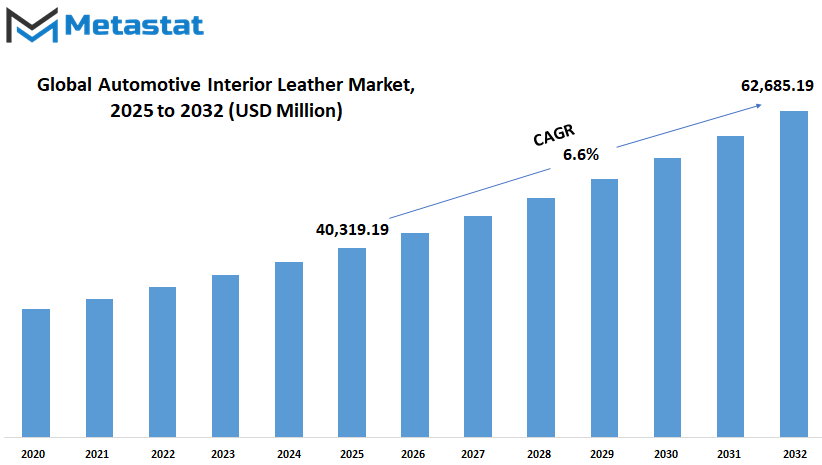
GROWTH FACTORS
Huge growth will come to the Global Automotive Interior Leather Market shortly. Changes in consumer preferences backed with developments in material technology will, in turn, see this market grow. Consumers seeking luxury cars want interiors that are stylish and comfortable. On the contrary, the elegance and unquestionable durability of leather still rank it as one of the top choices for an automotive interior.
Such behavior shows a paradigm shift of consumers wishing to spend a little more on vehicles that offer the additional feel-good factor of good aesthetics coupled with great tactile experiences. There is little wonder that leather adds to the luxury appeal of the automobile and its exclusivity is much sought-after in today's fiercely competitive marketplace.
Another reason for the growth of the Global Automotive Interior Leather market is the demand for lightweight and durable materials. Automakers are striving to improve fuel efficiency and reduce emissions, and these outcomes hinge upon the use of lightweight materials. On the other hand, leather, especially synthetic alternatives with high performance, strikes the right balance between durability and minimum weight; hence, it is an ideal choice for modern car designers.
There are, however, certain restraints harming the Global Automotive Leather market. The chief impediment in the way of market growth is higher price imposted on genuine leather as compared to synthetic. The genuine leather wins on all counts in terms of its actual quality and feel, but the other side of the coin is its costly production, outpricing it from the category of mid-priced cars.
Also at the same time environmental concerns about leather production and processing are gaining footholds in the marketplace. The leather has often been an environmental villain-from intensive water usage to chemical treatments-making these an important consideration as sustainability sprouts to consumers and manufacturers alike. But despite all the challenges, the future of the Global Automotive Interior Leather market harbors promising opportunities. The surge in eco leather and other sustainable leather alternatives have been expected to play a great role in shaping the future of the said market. Innovations in synthetic leather and other sustainable materials provide the same luxurious appeal as genuine leather but with a reduced environmental footprint.
These materials, without question, have begun to win the loyalty of consumers and manufacturers who care about sustainability and do not compromise on quality. With the advancement of technologies, other sustainable leather alternatives will likely open up the lucrative opportunities for the automotive interior leather market in the years to come.
MARKET SEGMENTATION
By Type
The Global Automotive Interior Leather market is anticipated to rise steadily over the next coming years not only due to advancements in automobile design but also due to the changing consumer preferences. The manufacturers point their efforts at using high-quality interior materials, especially leather, toward catering to the demands of high comfort and luxury that are to be expected in the cars.
There are two varieties that comprise the market on the basis of market types under which they fall; they are Known as Genuine Leather and Synthetic Leather, also called Faux Leather. Each of them has attracted various interesting features that entice different categories of consumers that contribute to the growth of the market. Genuine Leather is the primary category mainly associated with the luxury segment of cars, giving a feel of tending towards premium, long-lasting, and evergreen style. Traditionally, this is the flag bearer for quality and class.
However, it also comes at a very high price and brings in some environmental and animal cruelty concerns as well. In fact, with sustainability becoming an increasingly important issue for consumers as well as within industries, it is not unlikely that this could affect future demand for genuine leather. Automotive industries have to find the point of balance between luxury feel in their natural materials and environmental worry; therefore, this may prove to be a push for innovation in sourcing and processing genuine leather for more eco-friendly usages.
On one hand, Synthetic Leather is less costly, highly flexible, and does not carry a hefty ecological footprint. It has aesthetics close to the appearance and feel of real leather but is more environmental and easier to care for. Synthetic leather technology is improving such that the material is getting much closer to the real thing in texture and strength without its ethical problems; this makes it increasingly applicable for mid-range and even some high-end cars. The growing shift to electric vehicles and eco-friendly car models further spur demand for synthetic leather, as manufacturers want to be in line with environmentally conscious consumers.
By Quality Grade
The Global Automotive Interior Leather market is expected to change significantly in the coming years. This change is due to increased technological advancement, shifting consumer preferences, and rising environmental awareness. As car buyers become more choosy, premium and aesthetically pleasing interiors have been in demand. Leather, which gives a luxurious feel and durability, is one of the popular choices for automotive interiors.
However, the grade and quality of leather used significantly determine the final appeal and performance of a vehicle's interior. Based on the quality grade, the market can be divided into Top-Grain Leather, Split-Grain Leather, and Bonded Leather, with each offering its own characteristics and suited for particular segments of the automotive industry.
Top-Grain Leather is of the highest grade, with its refined surface and soft texture combined with excellent durability. It is highly used in the luxury vehicle because luxury and comfort are always more important there. This kind of leather will be added not only to its look but also it will assure longer performance; for this reason, it has always been preferred for luxury cars' manufacturers. Rising demand for luxury vehicles in developing countries is supposed to support future growth of this segment. As the automobile industry focuses on how to make driving an even more satisfying experience, using top-grain leather will become an even more common practice-meaning a combination of class and hardness.
There are also Split-Grain Leathers that come from lower layers of the hide. Such leather is less durable and less expensive compared to the top-grade one. It is still used today for a good finish and applied in mid-range vehicles where the cost-effectiveness is a concern without sacrificing aesthetics. As long as consumers demand stylish yet budget-friendly options, split-grain leather will remain a major market player. It is versatile and can be used for most interior components, including seat covers to door panels, which can suit a wide variety of consumer tastes.
The most economical is Bonded Leather, that is, from leftover leather scraps bonded together using adhesives. Although lacking the natural feel and durability of genuine leather, it offers an affordable alternative for entry-level vehicles. With greater emphasis on sustainability and reducing waste, bonded leather may be paid more attention to as manufacturers continue to look for eco-friendly alternatives. It runs in the course of sustainable production of automotive industries, wherein recycling and environmentally-friendly materials have recently gained greater preference.
Going ahead, the future of Global Automotive Interior Leather market shall be a factor of the effects of innovation on technology, changes in consumer behaviors, and rising environmental consciousness. With increasing customization and eco-friendliness, the type of leather will help determine the ultimate driving experience of the automobile.
By Application
The Global Automotive Interior Leather market is expected to experience tremendous growth in the near future, with an increase in the demand for luxury and comfort from consumers. More and more car buyers are not only interested in the performance but also in the aesthetic appeal and feel of the interior of the car. Hence, manufacturers pay more attention to the use of high-quality materials like leather.
This changing trend of preference from consumers is compelling carmakers to add leather into every element of the automobile. That could include seats, steering wheels, dashboards, door panels, and gear shift knobs. Seating is undoubtedly the most sought after usage of leather in an automotive setting. Leather seat does deliver that nice, feel-good touch as well as the benefit of materials- including its endurance as well as having it better for cleaning purposes.
However, eco-friendly and synthetic alternatives to leather will soon be the order of the day in future markets, not losing the luxurious feel but reducing their environmental footprint. Temperature-regulating materials and stitches will usher in a new era in seat designs and experiences as well.
Leather use could also be found in another prominent area known as the steering wheel. Touch, feel, and grip make driving much more comfortable with a leather-wrapped steering wheel, besides enriching the visual appearance of the interior. In the future, technological integrations may make steering wheels smarter with features like touch controls and biometric sensors, thus demanding leather, too, that doesn't let technology compromise feel and durability.
Dashboards and door panels now receive leather treatments to enhance the allure of the vehicle's interior. While contributing indirectly to aesthetics, leather in these parts also enriches touchability, giving a holistic, premium feel to the entire automobile. Coming years will really see the use of more environmentally friendly leather and will balance luxury with sensitivity toward nature. Also, the integration of digital screens and touch-responsive areas calls for leather material that is soft and not easily broken.
They are small, but they are also one of the most important contact areas when driving. Premium leather-wrapped gear shifts, for instance, give a great feel and even grip to ensure comfort and function in driving. With electric and autonomous vehicles now heading the growth in the automotive sector, even a small thing like a gear shift will be thought of in a different way.
It might even include advanced materials that give the feel of traditional leather but still improve performance. Altogether, the Global Automotive Interior Leather market is on a journey to merge the luxury and sustainability aspects with the advancement of technology. Future automobile designs with personalized, sustainable vehicles will spur demand for unique leather applications throughout various markets.
By End Users
The Global Automotive Interior Leather market is going to witness gigantic changes soon with the advancement in technology, shift in consumer taste preferences, and changing environmental regulations. The automobile interior leather has been one of the favorites of customers for a long time due to its durability, sense of luxury, and aesthetic value. However, in recent times, new factors have started influencing both the demand and supply sides of the market.
The primary growth driver in the Global Automotive Interior Leather market is the increasing demand for passenger cars, especially in emerging economies. The growing middle-class population and increased incomes make consumers seek vehicles that provide comfort and luxury, with leather interiors being one of the top preferences. This demand is not limited to traditional markets like North America and Europe; countries in Asia-Pacific, such as China and India, are becoming major players. Consumers in these regions are increasingly valuing the premium feel and status that leather interiors provide, pushing automakers to include these options more frequently.
On the other hand, commercial vehicles are also contributing to the growth of the Global Automotive Interior Leather market. Although commercially operated vehicles are always about form versus function, things are now changing. It has come to be realized that the comfort of the driver must be guaranteed especially for long haul trucking and ride-sharing services. Leather interior in commercial vehicles is no longer an added expense but a feature that may be added to ensure improved satisfaction by drivers and thus less fatigue. This change is likely to unlock new avenues for leather providers and manufacturers in the future years.
Technological advancement is also the factor that will influence the future of the Global Automotive Interior Leather market. The new synthetic leather materials that look and feel just like natural leather but have a higher durability and environmental friendliness are being developed. These materials are more resistant to wear and tear, easier to clean, and more sustainable, making them appealing to both consumers and manufacturers. The focus of the automotive industry on sustainability is also encouraging the development of eco-friendly leather production methods, which reduce the environmental impact of traditional tanning processes.
From current estimations and scenarios, in essence, Global Automotive Interior Leather stands on its road to growing momentum, along with the burgeoning trend of requirements from passenger automobiles, commercial and technical advancements to protect the surroundings as well as ensuring sustainability of an environment with greater attention that keeps on picking at consumer behaviors through time and innovations.
|
Forecast Period |
2025-2032 |
|
Market Size in 2025 |
$40,319.19 million |
|
Market Size by 2032 |
$62,685.19 Million |
|
Growth Rate from 2025 to 2032 |
6.6% |
|
Base Year |
2024 |
|
Regions Covered |
North America, Europe, Asia-Pacific, South America, Middle East & Africa |
REGIONAL ANALYSIS
The market for automotive interior leather is expected to grow robustly in the next few years due to changing consumer preferences to lavished and comfortable vehicle interiors. Since evolving technology and car manufacturers look forward to creating an even more sophisticated driving experience, leather usage has become a symbol of beauty and functionality. This market growth is driven by increased disposable incomes, increased ownership of vehicles, and a demand for premium features in vehicles.
Further, the trend of increased usage of electric vehicles has prompted most manufacturers to pay attention to the design of the interiors in keeping with the feel of the new, modern, high-tech vehicles, and leather remains the first choice material due to its durability and aesthetic appeal. Geographically, the global automotive interior leather market has been divided into several key regions. The North America region incorporates the U.S., Canada, and Mexico. Demand for luxury vehicles and SUVs dominates the North American market.
In the U.S., its massive automotive sector, along with consumers' demand for high-end cars, is considered to be major factors in the region. The automotive industries in Canada and Mexico are also expanding and increasingly focusing on exporting vehicles. Central to the growth market in Europe are the UK, Germany, France, and Italy. In countries like Germany, where premium brands BMW, Mercedes-Benz, and Audi emerge, this is one of the biggest drivers of the adoption of leather interiors.
The UK and France also contribute, with the consumer wanting to own stylish and comfortable cars. Italy, where high-end cars are produced for ages, makes cars that feature more leather inside. In addition, contribution also comes from the rest of Europe, with stable demand from countries across the continent.
Asia Pacific also constitutes a very important region, with India, China, Japan, and South Korea leading the way. China has been a very fast-growing car producer and buyer, thus entering the ranks of the leading markets for automotive leather interiors.
Japan and South Korea also make a significant contribution because most of the world's leading automobile companies come from these countries: Toyota, Honda, and Hyundai. India, where the middle class is increasingly larger and where people are acquiring cars more regularly, further contributes to the premium interior demand. The rest of Asia-Pacific contributes to the overall growth, as the countries gradually begin to increase automotive production and consumption.
South America, with Brazil, Argentina, and others, is recording steady growth in the automotive interior leather market. Brazil leads, followed by Argentina and other South American countries, whose car sales have been increasing in recent years as consumers show increased interest in premium features.
The Middle East & Africa region-classified into GCC countries, Egypt, South Africa, and others-is a new region for the market. Going by the monetary growth of GCC countries, which is mainly based on oil revenues, their demand will increase only in terms of high-quality leather interiors due to their class and luxury vehicle preferences. South Africa and Egypt will only contribute to the growing auto sectors and have a middle-class population interested in premium cars.
The global market for automotive interior leather will continue to change and alter with changing consumer expectations and advancements in technologies. Sustainability is going to play an even bigger role, making manufacturers look for eco-friendly leather options without compromising on quality or style.
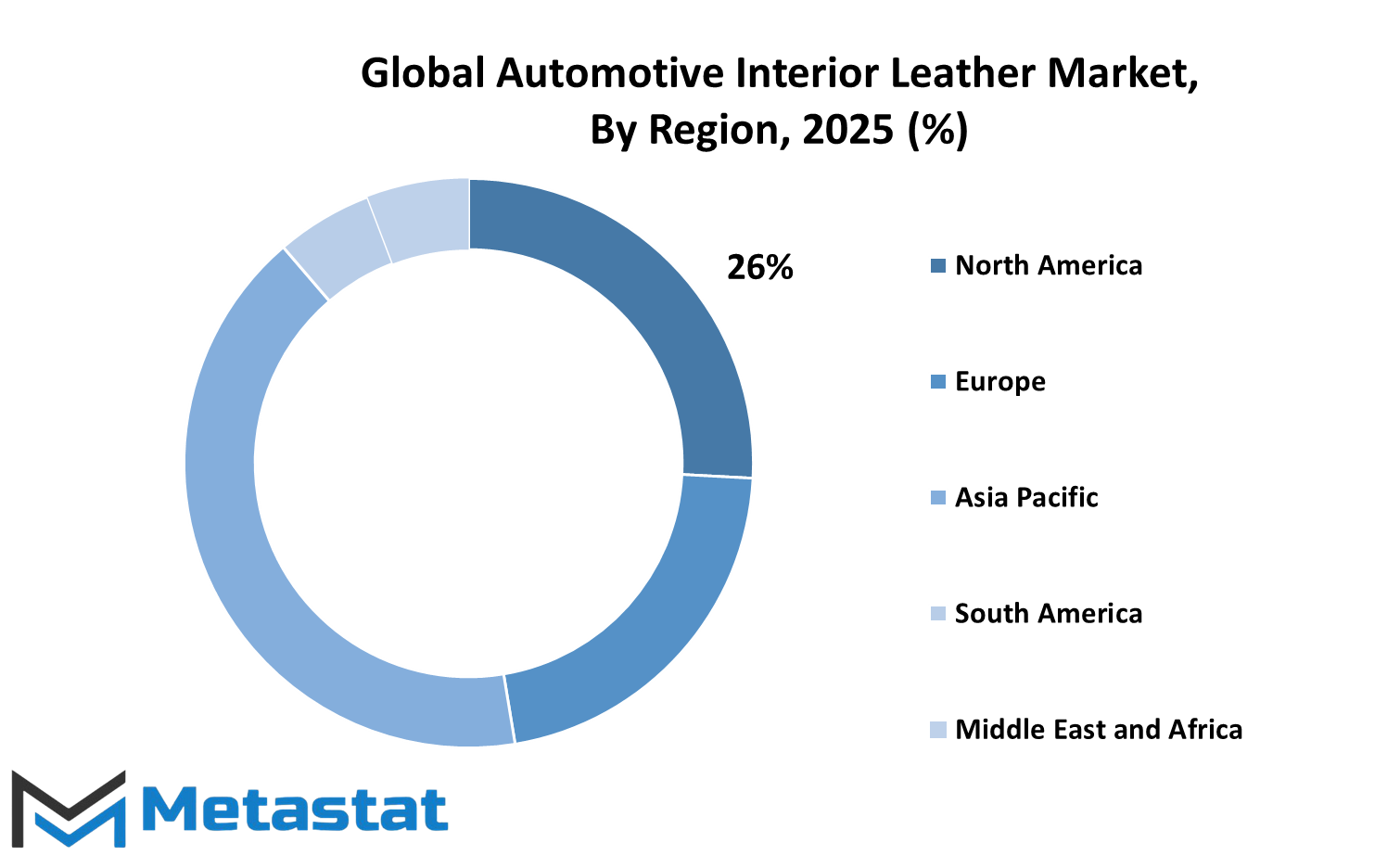
COMPETITIVE PLAYERS
Technology, sustainability, and consumer preferences all set to play a significant role in the industry's future-the Global Automotive Interior Leather Market is slated for a deep transformation. From luxurious yet hard-wearing car interiors, there is a surging demand. Automotive leather holds a very key position in vehicles of both top-of-the-range and mass-production. As auto manufacturers look towards comfort and looks, leather occupies a central space in automotive design, and as such, encourages innovation among big players in this industry.
Companies, like Elmo Sweden AB, D.K Leather Corporation, and Scottish Leather Group Limited, are among the companies managing these changes, providing products that fit aesthetic needs and environmental standards. Sustainability has become an important need in current society, with consumers and governments trying to implement eco-friendly solutions. This trend has made firms like Bader GmbH & Co. KG and Wollsdorf Leder Schmidt & Co Ges.m.b.H develops leather with minimal chemicals and lower water consumption during production. Synthetic leather alternatives also have innovation for companies to present the feel of leather without high environmental impact.
Another aspect through which smart technologies are changing vehicles is impacting the Global Automotive Interior Leather market. It is about developing leather that, besides its look and feel being premium, goes well with newer technological features, such as heated seats, sensors, and new climate control systems. Lear Corporation and Adient plc are working on materials to be able to absorb such upgrades without affecting comfort or durability.
Customization is the other trend shaping the future of the market. As consumers become more inclined to seek individualized experiences, car manufacturers are teaming up with suppliers like Boxmark Leather GmbH & Co KG and Midori Auto Leather Co., Ltd. to offer more colors, textures, and finishes. The increasing demand for customized interiors is challenging leather manufacturers to innovate in terms of design and functionality so that their products will be able to meet different tastes while still adhering to the highest quality standards.
Growth in the Global Automotive Interior Leather market is also expected from the emerging markets, notably in Asia. Companies such as Responsive Industries Ltd are thus expanding their presence to meet the rising demand from countries with growing middle-class populations and increased car ownership. This will continue to fuel competition and so lead to a more continuous improvement in product offering.
The Global Automotive Interior Leather market evolves and changes because of technological innovations, sustainability awareness, and shifts in consumer behavior. As leading producers adapt to new trends, their products will evolve to remain true to their luxuries and functions while respecting environmental concerns.
Automotive Interior Leather Market Key Segments:
By Type
- Genuine Leather
- Synthetic Leather (Faux Leather)
By Quality Grade
- Top-Grain Leather
- Split-Grain Leather
- Bonded Leather
By Application
- Seats
- Steering Wheels
- Dashboard and Door Panels
- Gear Shift Knobs
By End Users
- Passenger Cars
- Commercial Vehicles
Key Global Automotive Interior Leather Industry Players
- Elmo Sweden AB
- D.K Leather Corporation
- Scottish Leather Group Limited
- Lear Corporation
- Bader GmbH & Co. KG
- Wollsdorf Leder Schmidt & Co Ges.m.b.H
- Boxmark Leather GmbH & Co KG
- Midori Auto Leather Co., Ltd.
- Adient plc
- Responsive Industries Ltd
- Moore & Giles
- Carroll Leather
WHAT REPORT PROVIDES
- Full in-depth analysis of the parent Industry
- Important changes in market and its dynamics
- Segmentation details of the market
- Former, on-going, and projected market analysis in terms of volume and value
- Assessment of niche industry developments
- Market share analysis
- Key strategies of major players
- Emerging segments and regional growth potential



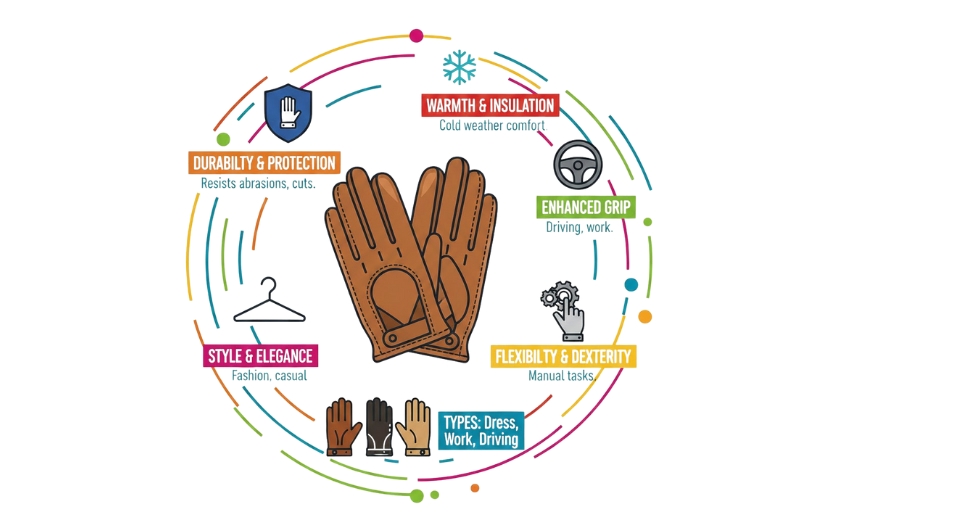
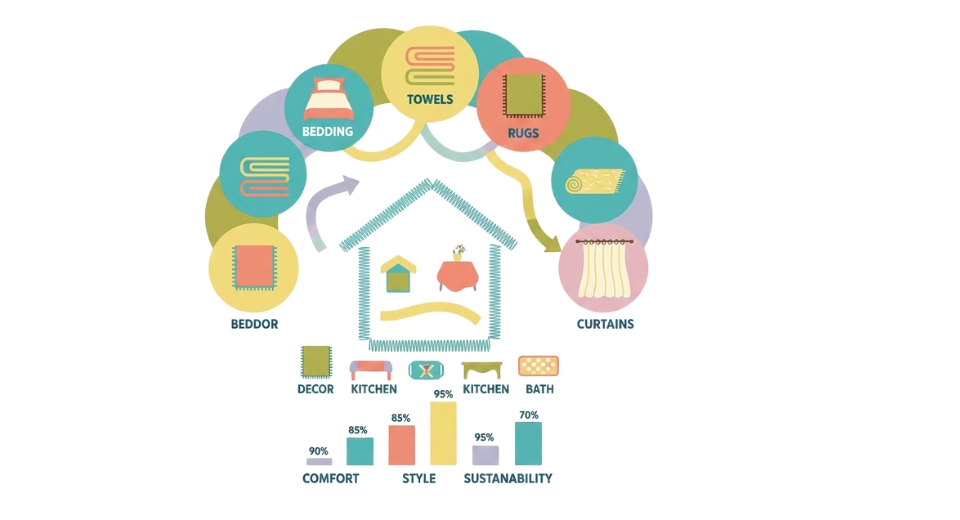

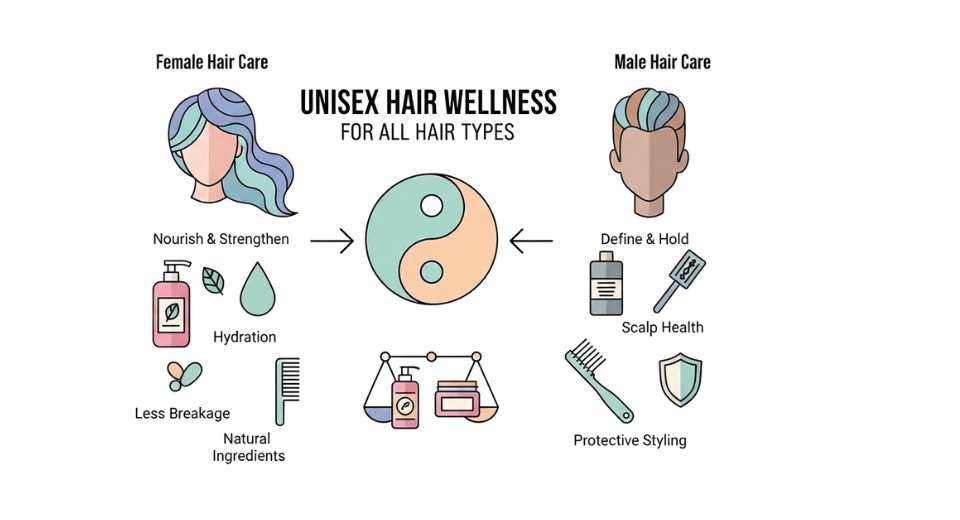

 US: +1 3023308252
US: +1 3023308252






